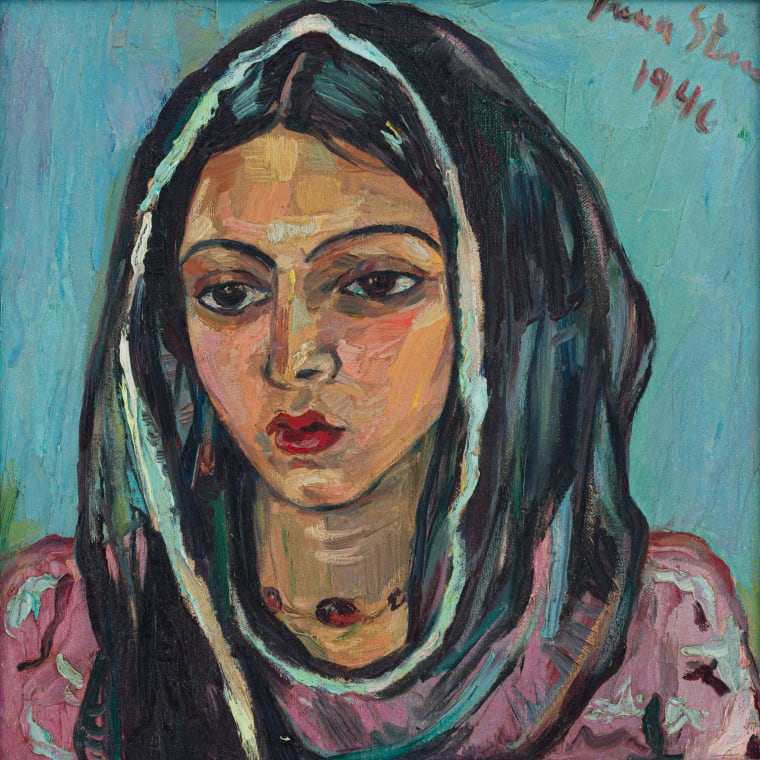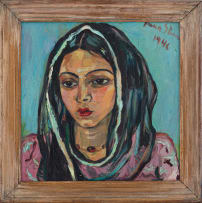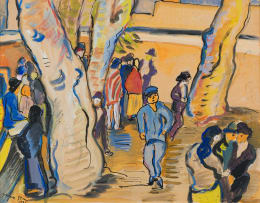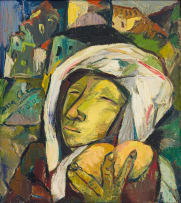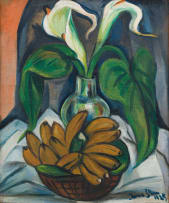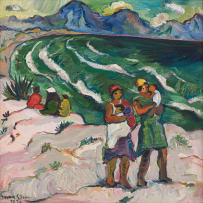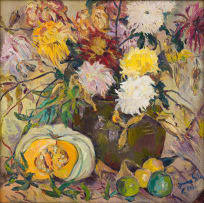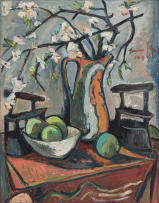Modern and Contemporary Art
Live Virtual Auction, 16 May 2023
Modern and Contemporary Art
Incl. Buyer's Premium & VAT
About this Item
signed and dated 1946
Notes
This striking portrait forms part of a highly specific output by Irma Stern depicting anonymous Cape Muslim women. An ethnically diverse group of peoples linked by a shared history of slavery and common Muslim faith, Cape Muslims - or Malays - figured strongly as a distinctive category among Cape Town's white artistic community throughout the twentieth century. Stern, whose nursemaid was a woman of Indian descent from the southern Atlantic island of Saint Helena, produced her earliest portraits of Cape Muslims in the 1920s. Stern had a particular preference for women and depicted sitters varying in age from shy young girls to self-assured older women, some at work or involved in ritual, others at rest. Stern was particularly drawn to portraying Cape Muslim customs and ceremony, notably marriage. She was attentive to all aspects of feminine dress and used delicate brush marks to detail the complex embroidery of her various sitters' veils, hijabs and medora (an ornamental headdress worn by Cape Muslim brides). This lot portraying a young woman in three-quarter view, a preferred pose for Stern, bears out these interests. The composition dates from Stern's celebrated golden period of the 1940s. It was produced after her career-defining visits to Zanzibar (1939 and 1945) and Belgian Congo (1942), which saw her fervid expressionism yield to a more descriptive and complex personal style grounded in bold colour treatments. The careful faceting of the woman's facial features in this lot is a hallmark of works from this period more generally, as is Stern's felicitous use of pink. Stern was well aware of the limited rights of Muslim women throughout Africa, noting as much in her book Zanzibar 1.While it is impossible to know the thoughts of the sitter in this work, it bears stating that Stern allowed for languor and repose in her portraits that gave her female subjects agency and individuality. This in turn enabled Stern to produce portraits that exceeded mere visual anthropology. Writing about Stern's portrayals of Cape Muslims, poet and Muslim scholar Gabeba Baderoon notes: 'Stern's oeuvre of 'Malay' paintings is among the best-known South African images of Muslims in the twentieth century. While her work may be placed in the tradition of South African Orientalism, which focused on the Malay Quarter, Stern's paintings reward close viewing.'2 Baderoon's book Regarding Muslims: From Slavery to Post-Apartheid (2014) is illustrated with another example of Stern's portraits, Malay Bride (1942). In 2013, Strauss & Co sold Stern's Malay Girl (1938) for R11.7 million.
1. Irma Stern (1948) Zanzibar, Pretoria, J. L. van Schaik, page 45.
2. Gabeba Baderoon (2004) Oblique Figures: Representations of Islam in South African Media and Culture, Unpublished Doctoral Thesis at University of Cape Town, page 74.
